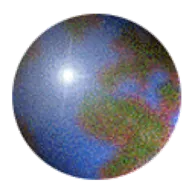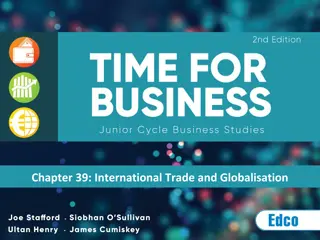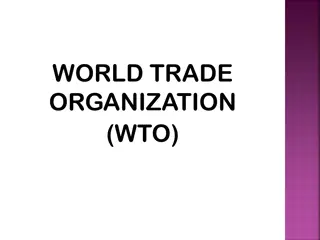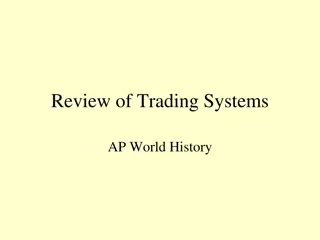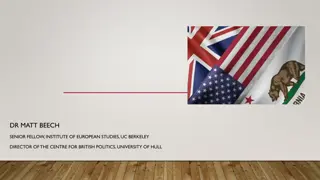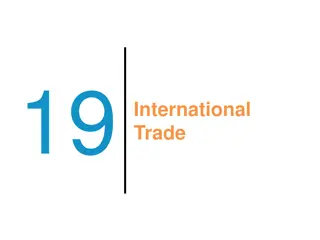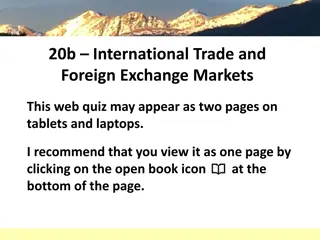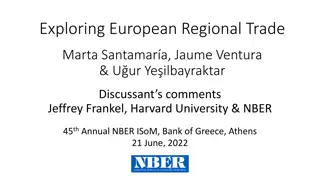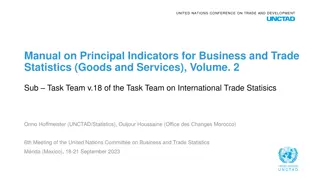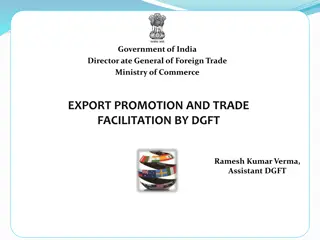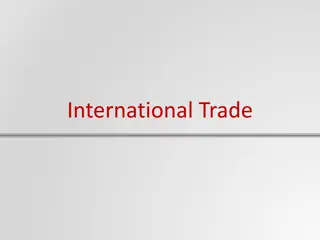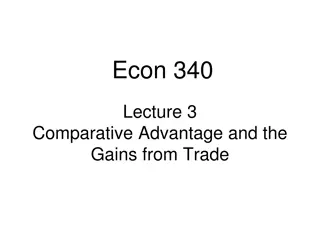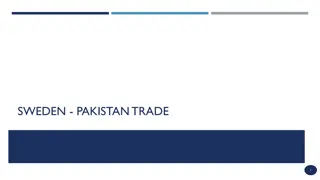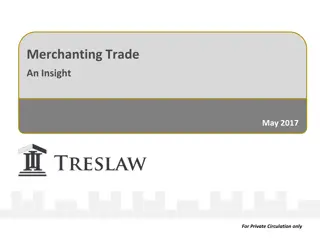Insights into Early World Trade Routes
Early long-distance trade primarily dealt with luxury items like silk, gold, and spices before 1500. The growth of markets reflects economic vitality and the benefits and losses of trade on society have been analyzed historically. Trade networks connected diverse cultures, with trade diasporas dating back to 1500 B.C.E. Trade in the Americas pre-1500 C.E. varied, with vertical trade in the Inca Empire and controlled trade in Central America and Mexico. Sub-Saharan Africa saw desert trade and dominance by empires like Ghana, Mali, and Songhay controlling luxury goods.
Download Presentation

Please find below an Image/Link to download the presentation.
The content on the website is provided AS IS for your information and personal use only. It may not be sold, licensed, or shared on other websites without obtaining consent from the author.If you encounter any issues during the download, it is possible that the publisher has removed the file from their server.
You are allowed to download the files provided on this website for personal or commercial use, subject to the condition that they are used lawfully. All files are the property of their respective owners.
The content on the website is provided AS IS for your information and personal use only. It may not be sold, licensed, or shared on other websites without obtaining consent from the author.
E N D
Presentation Transcript
Chapter 12: Establishing World Trade Routes Early long distance trade was limited to luxury items--silk gold, spices--that combined high value with low bulk Before 1500, most trade was local and focused on food Growth of markets both stimulates and reflects economic vitality
An Historical Analysis Analysis includes study of what parts of society benefited/lost from trade To what degree do governments control trade? In free market economy there would be no regulation Economies are regulated for the greater good There was free trade in the ancient world
Trade Networks Trade diasporas conducted trade between diverse cultures as early as 1500 B.C.E. Far flung trade in Roman Empire was not conducted by Romans but by many different ethnic groups Traders were marginal members of their host societies who brought wealth to those societies
Trade in the Americas Before 1500 C.E. Trade in the Inca Empire Incan trade network extended north and south to embrace 32 million people Vertical trade connected coastal zones with the high mountain regions Highlands produced manufactured goods and crafts Food from lower regions
Trade in the Americas Before 1500 C.E. Trade in Central America and Mexico Mayan traders operated independent of government control Aztec trade was controlled by government Long distance trade controlled by pochtecas, guilds of traders who gathered goods and military intelligence for Aztec leaders
Trade in Sub-Saharan Africa West Africa Desert trade made possible with domestication of camels Three large empires--Ghana, Mali and Songhay-- dominated trade in luxury goods Movement of goods divided into segments with different groups (often adapted to local environment) controlling each segment
Trade in Sub-Saharan Africa East Africa Early trade domination by Ethiopians ended by Arab traders with rise of Islam Great Zimbabwe a trading center Ports were the meeting point of ocean trade and local overland trade Swahili emerged as the commercial language of coastal areas
Muslim and Jewish Traders Jewish Traders Trading diaspora took advantage of the dispersion of Jews from Israel Trading communities extended from Europe to China Baghdad, astride west Asian trade routes, was home to the most prominent Jewish community around 1500
Muslim and Jewish Traders Muslim Traders Muslim traders dominated Indian Ocean trade after shift of Abbasid Caliph to Baghdad (762) Rise of Muslim sultanate in Delhi in 13th century extended Muslim influence eastward Islam and hajj encouraged trade
Asias Complex Trade Patterns The Polynesians of the South Pacific Migrated from Asia 6,000 years ago Relied on single- and double-wide canoes to reach as far as Hawaii and New Zealand Had the capability to reach the Americas Were among the greatest sailors in history but used skill to find food and land, not for the joys of exploration
Asias Complex Trade Patterns Malay Sailors in South China Sea and Indian Ocean Made important sailing innovations Created cargo ships--jongs or junks Balanced lug square sails Learned pattern of seasonal monsoon winds Carried goods such as bananas as far as Madagascar Established trade routes between China and East Africa
Asias Complex Trade Patterns Sailors and Merchants of the Indian Ocean Indian Ocean the major trade area (1000-1500) Emerging Arab dominance based on knowledge learned from conquest of trading cultures Control of eastern Indian Ocean trade passed to Indian Muslims in 13th century Muslims were active in area when European sailors arrived in the 15th century
Asias Complex Trade Patterns China International Trade China periodically engaged in ocean trade Ming asserted power by sea after 1368 Zheng He the most notable sailor but Ming ended his explorations and emphasized internal trade while restricting access of foreigners in China Decision to cut off contact was costly to China Became vulnerable to new sea powers
Asias Complex Trade Patterns China Internal Trade Chinese wealth based on population and territory Agricultural revolution boosted wealth during Song dynasty Trade became monetized and integrated in a national system of water transport that included development of the Grand Canal for transport of goods beyond the reach of sea-going powers
The Mongols The Pax Mongolica Influence of Mongols noted by Polo and Battuta Extensive area of relative travel security Marco Polo s travels brought him to Great Khan in China Polo s tale informed Europeans of wealth of China and existence of Silk Route Debate continues over the authenticity of his story, The Travels, published after his return in 1295
The Mongols Chinggis Khan (b. c. 1162) Became universal ruler by conquest in 1206 Organized his realm for military battle Sons extended conquests after death of Chinggis Khan in 1227 Move to southwest ended in 1260 (battle of Ain Jalut) in modern Jordan
The Mongols The End of the Mongol Empire At peak it controlled all of China and almost all of Russia, Iran, Iraq, and central Asia Could not govern by horseback and were absorbed into local populations Empire divided into four parts after death of Chinggis Khan; local people slowly drove Mongols out of each area
The Mongols Plague and the Trade Routes Disease followed the trade routes including Black Death Plague weakened the Mongols and other regions it touched One-third of Europeans died from plague
The Mongols From Mongol to Ming: Dynastic Transition Mongols ruled China, 1279-1368 Mongol cruelty drove people from north to south China (where 90% of people lived) Revolts against cruelty helped Ming to power Under Ming, China s population grew sharply and territory expanded More Chinese began to move north
Legacies to the Present 1500 a turning point in world trade patterns Emergence of a single global trade system Muslim traders dominated this system Mesoamerican and Andean networks remained separate European traders sought control from Europe but were not successful until 1750


